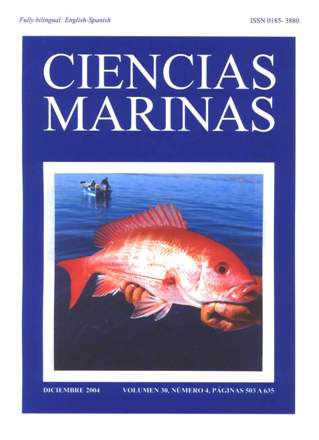Modelling the use of two fishery access rights, concessions and licences, in the red sea urchin, Strongylocentrotus franciscanus (Agassiz), fishery at Santo Tomás, Baja California, Mexico
Main Article Content
Abstract
Various stages of the red sea urchin, Strongylocentrotus franciscanus (Agassiz), fishery were simulated to evaluate the effect of two types of access rights under Mexican law: concessions and licences. The resource biomass was evaluated using the critical depensation and Schaefer models. Each model was evaluated as a static or dynamic system. The parameters required for each model were determined from government data and by generating stochastic numbers using the Monte Carlo method to adjust to a dynamic model. In general, both models predicted catches smaller than those observed. The five-year-period simulation for both models showed a drop in biomass when licences are issued, whereas a similar simulation for concessions resulted in increased biomass, except when high temperatures occurred. Our results suggest that issuing concessions rather than licences is the best option to conserve the fishery.
Downloads
Article Details

This work is licensed under a Creative Commons Attribution 4.0 International License.
This is an open access article distributed under a Creative Commons Attribution 4.0 License, which allows you to share and adapt the work, as long as you give appropriate credit to the original author(s) and the source, provide a link to the Creative Commons license, and indicate if changes were made. Figures, tables and other elements in the article are included in the article’s CC BY 4.0 license, unless otherwise indicated. The journal title is protected by copyrights and not subject to this license. Full license deed can be viewed here.

